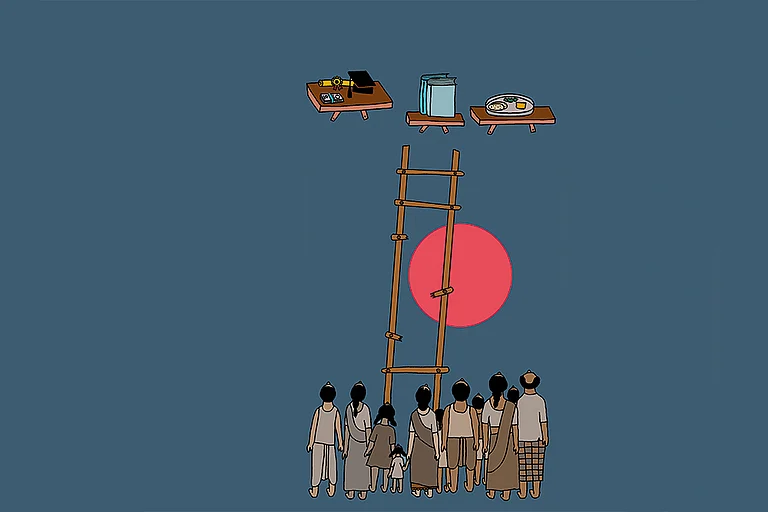After nearly a century of silence, caste is returning to the census. For the first time since 1931, India will formally record jatis and sub-castes in the 2026–27 census, an administrative shift with massive political consequences. For decades, governments have sidestepped the arithmetic of caste, avoiding the release of 2011’s caste data and downplaying OBC enumeration. Now, cornered by state-level pressures and opposition demand, the Centre is preparing to count what it long evaded.
Counting Caste: India’s Next Big Political Faultline
After nearly a century, caste is returning to the census. What began as a bureaucratic exercise has become a political crucible, reshaping affirmative action, redrawing party lines, and raising questions about who truly benefits from the arithmetic of justice.
But this isn’t just about data. The caste census cuts through every faultline in Indian democracy, affirmative action, federalism, party strategy, sub-categorisation, and social justice itself. Who has truly benefited from reservations? What do we mean when we say OBC? And what happens when the very categories meant to correct inequality begin to reflect it?
At Outlook, we’ve been tracking the caste census debate well before it became electoral currency. From Bihar’s seismic caste survey to Tamil Nadu’s state-level sub-categorisation policies, from courtroom battles to the language of campaign trails. This isn’t a new story, however, today, this administrative decision has become a litmus test for India’s evolving caste politics. What began as a bureaucratic exercise has snowballed into a national reckoning.
Writing in Outlook’s 21st September 2024 issue, Caste vs Caste, Anand Teltumbde calls the census a moment where even “traditionally opposing forces like the RSS and the BJP, known for their data phobia, seem to have aligned in favour. Yet he warns that what appears like consensus may mask deeper games. “After effectively using caste-based reservations as a political tool, they now seek to forge new weapons out of caste resources such as sub-categorisation. Caste census also is one such stratagem.”
The politics of this move are hard to miss. As political scientist E. Venkatesu writes in Outlook’s June 2025 issue, Gated Neighbourhood, “The decision to go for a caste census is not a surprise but rather an electoral compulsion”. Facing an OBC drift toward the Congress, evidenced in Karnataka, Telangana, and 2024’s national vote share shifts, the BJP’s sudden embrace of enumeration reveals a party recalibrating in real time.
In Bihar, a state caste survey revealed that EBCs make up 36% of the population; those numbers have upended the political script. Outlook’s Bihar Correspondent MD Asghar Khan writes, “Since October 2, 2023, when the results of the Bihar caste survey showed 63 per cent of the electorate comprised the OBCs and the EBCs, the castes talked about the most have been the EBCs”.
Despite their demographic weight, EBCs remain underrepresented in ministries and state institutions. “Today, the EBCs have to fight with the OBCs for their rights,” says a source from an EBC community, Hitendra Prasad, pointing to how dominant castes like Yadavs and Kurmis have cornered most of the gains from OBC reservations. Now, with no unified EBC leadership, parties are scrambling to woo fragmented sub-castes and recalibrate alliances.
The Centre’s plan avoids grouping castes under OBC categories altogether. Instead, it will record self-declared jatis, leaving the data open to future interpretation by states. That ambiguity is by design. It marks a historic shift—one that leaves the OBC category undefined for now and raises a central question: what will the data actually change?
While opposition parties frame the census as a democratic corrective, their vision for what comes next is murky. Teltumbde cautions: “Even the most ardent proponents… struggle to articulate a clear plan beyond the familiar rhetoric of ensuring fair representation for all castes.”
What’s clear is this: the caste census will reshape the terrain of representation, demand new frameworks of power-sharing, and likely deepen old demands for sub-quotas and internal reclassification. In places like Manipur, where tribal politics are already inflamed, the implications are being watched closely. In Tamil Nadu, they are already being tested against a 69% quota ceiling. In Bihar, they are recalibrating the very meaning of Mandal politics.
We’ve followed this story through courtroom rulings, field reports, manifesto pledges, and voter shifts. As India prepares to count caste, the question isn’t just what the data will say, but what the country will do with it. As Teltumbde writes: “The data, if read objectively, may challenge our notion: whether focusing on caste is a solution or perpetuation of the problem”.



